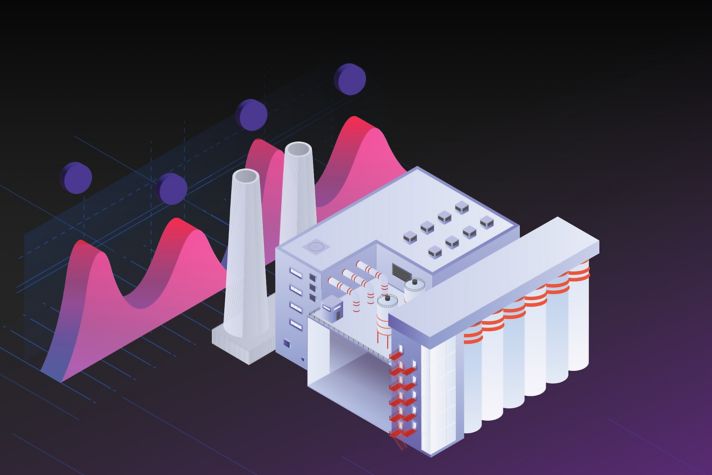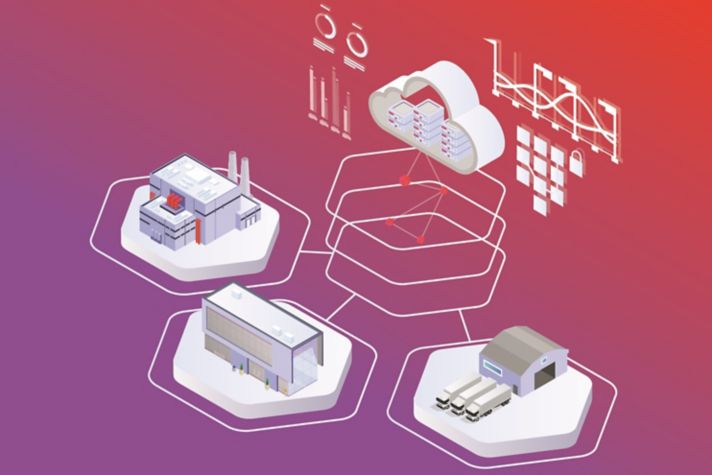How Industrial IoT Will Solve the Problems of the Next 20 Years
Industry 4.0 Integration has the power to push forward-thinking industries to unprecedented levels of productivity.
Twenty years ago, few people could have imagined how far machine intelligence, big data and predictive analytics could take industrial enterprises. Industrial IoT (IIoT) will lead to even bigger leaps in the decades ahead. But industrials will need IIoT to tackle new challenges that bear little resemblance to those of the past 20 years. These challenges require an end-to-end view of operations and a willingness to think in new ways.
As people, processes and assets become more and more connected, being aware of these trends can help business leaders navigate the changing digital landscape:
1. Operations will be viewed more holistically
The systems that drive business are becoming increasingly complex — they require greater digitization to realize their potential. Historically, we just needed to sound an alarm when something like a temperature or a toxin went out of acceptable parameters. Now, businesses need to understand how their entire operation works holistically. They have to integrate siloed operations. And move past a break/fix mentality. Knowing how all things work together will show you where performance is suffering.
Industrial businesses have it especially tough. In industries like ecommerce and advertising, for example, if you create something and it doesn’t work, it doesn’t break anything. You just make a new ad or offer a different pair of shoes. But if you’re an industrial enterprise and you do something wrong, you can create serious safety issues and disrupt an entire operation.
For a massive structure like a refinery, a plane or a building, before you build it, you need to build a simulation model. If you modify one thing, you can virtually test what will happen, because the cost of getting it wrong in reality is significant. Physics, mathematics and engineering come into play.
An equally challenging barrier for industrials is the confusion in the marketplace about which technology to use for what application — and you’ve got no standards to guide you. You can spend a lot of money and never spend enough. Choosing the right partner for your transformation is critical. We need to understand the complexities of your industry.
2. IIoT will enable next-tier performance
The first thing a company usually does to be more productive is to go “lean.” To trim overhead and inventory, streamline processes, etc. But that can only take you so far. The second step is to automate your processes. That reaches its limit too.
IoT solutions become the third and biggest evolution companies want to take on. It’s putting your data to work. It has fewer limits and tremendous opportunities.
If you’re already lean and automated — if you’ve already squeezed the lemon — you’re ready for next-tier performance. That’s IIoT. That’s the digital transformation.
3. Shiny objects will fade, practical solutions will prevail
If you’re looking for technology that’s relatively easy to install and delivers a high ROI, avoid sexy toys like AR and VR. They’re light on impact, and create a barrier for customer adoption. The future depends on scalable, lower-cost ways to push performance to reach greater business outcomes. The approach has to be practical.
Maybe you’re ready to mine richer data and create more actionable insights — to arm workers with data to make better decisions. You may be focused on protecting your operations from cyber threats. Being compliant with safety regulations. Or all of the above. Once your objectives are clear, it’s important to be pragmatic in searching for fresh ideas to solve them. Start with what you want to get out of IIoT, then explore the right technologies to accomplish it.
4. Data will be the differentiator
Companies tend to spend a lot on analytics, but few gets the results they’re looking for.
Many providers don’t have the historical data and insights to apply to their analytics. They don’t know the theoretical maximums or how to get there. It takes firsthand knowledge in the lab and in real life.
For example, if you want to know the shortest distance between two destinations, that’s a math formula. The second type of data is empirical — weather, no-go zones and other restraints in getting from A to B.
The third type is big data. Factors you get from collected data: how ambient temperatures and other factors affect your model. Not a fundamental yield, but a maximum yield. What happens when deskless workers don’t follow maintenance workflows exactly. At Honeywell, we feel it’s critical to combine big data with industry knowledge and physical, chemical and empirical knowledge.
5. Process will move from reactive to proactive
The future of IIoT relies on “things” — 50 billion devices by 20221 — becoming more and more connected. And those things will continue to learn. The more you can create a closed loop system, the more collected data can inform and improve performance.
Real-time data, combined with predictive analytics, is helping industrials identify warning signs before they become failures. It’s turning workers into experts, able to predict machinery problems without affecting production or causing expensive downtime.
We’re seeing powerful results in oil refineries, which are still largely dependent on workers going on maintenance rounds to check machinery and record data on clipboards. By automating data capture and applying advanced algorithms that continually improve equipment efficiency, every day of production can be the best day ever — outperforming the one before.
The future of any business is hiding in their data — to provide more accurate models that drive more predictive approaches. As things become more connected and machines continue to learn, enterprises will see stronger business outcomes and reach a point of autonomous problem-solving.
6. IIoT will spark continued innovation
IIoT has the potential to do more than optimize your business. It can revolutionize it. In the same way on-site storage became the cloud, and expensive physical servers turned virtual, IIoT allows you to reimagine what’s possible for your business.
Right now, a car goes back and forth, but what if it went sideways? Can a plane get you to Tokyo in half the time? Can industrial plants become injury-free? Thinking in new ways and pushing toward greater innovations could have a huge impact, globally and locally.
But today’s biggest innovation will soon be outdone by the next new idea. As fast as things are changing, staying competitive demands smarter, bolder solutions. And IIoT can shorten the path to implementing them.
7. Small improvements will have profound results
It can be paralyzing to think past the challenges of digitizing legacy equipment and processes, but the increased efficiencies can affect your bottom line exponentially. Just a one percent increase in productivity means trillions in economic impact on the world. What could it mean for your business?
For Baosteel, a Chinese iron and steel company, a single, incorrectly set welding machine can cost $545K every year in stoppages and labor alone. So we applied a combination of AI and predictive modeling to analyze 6,000 welding sessions. From that data, we developed the first intelligent management system for welding machines. It’s reduced stoppages by 90 percent and cut labor costs by $450K annually.
8. IIoT disruptors will own the future
No vertical will be unaffected by the need to reinvent how they do business. Eight-six percent of enterprise decision makers believe if they don’t make serious progress by digitally transforming their business in the next two years, they’ll fall behind the competition and hurt their bottom line.[1] The complexity, cost and uncertainty around how to proceed are reasons to be cautious. But they’re not an excuse to stand still — businesses that do will fail.
The ease comes in finding a partner who can move an enterprise past the noise and the flash to a practical approach. We’ve spent over a century working closely with key industries, addressing the challenges of their business and their workers. This deep domain knowledge, along with decades of IIoT innovation, gives us a richer understanding of how to improve a customer’s performance. When you can bring all this together, there’s nothing stopping what industrials can create in the next 20 years.
Ready to Learn More? See what Honeywell can do for your enterprise. Request a consultation.



